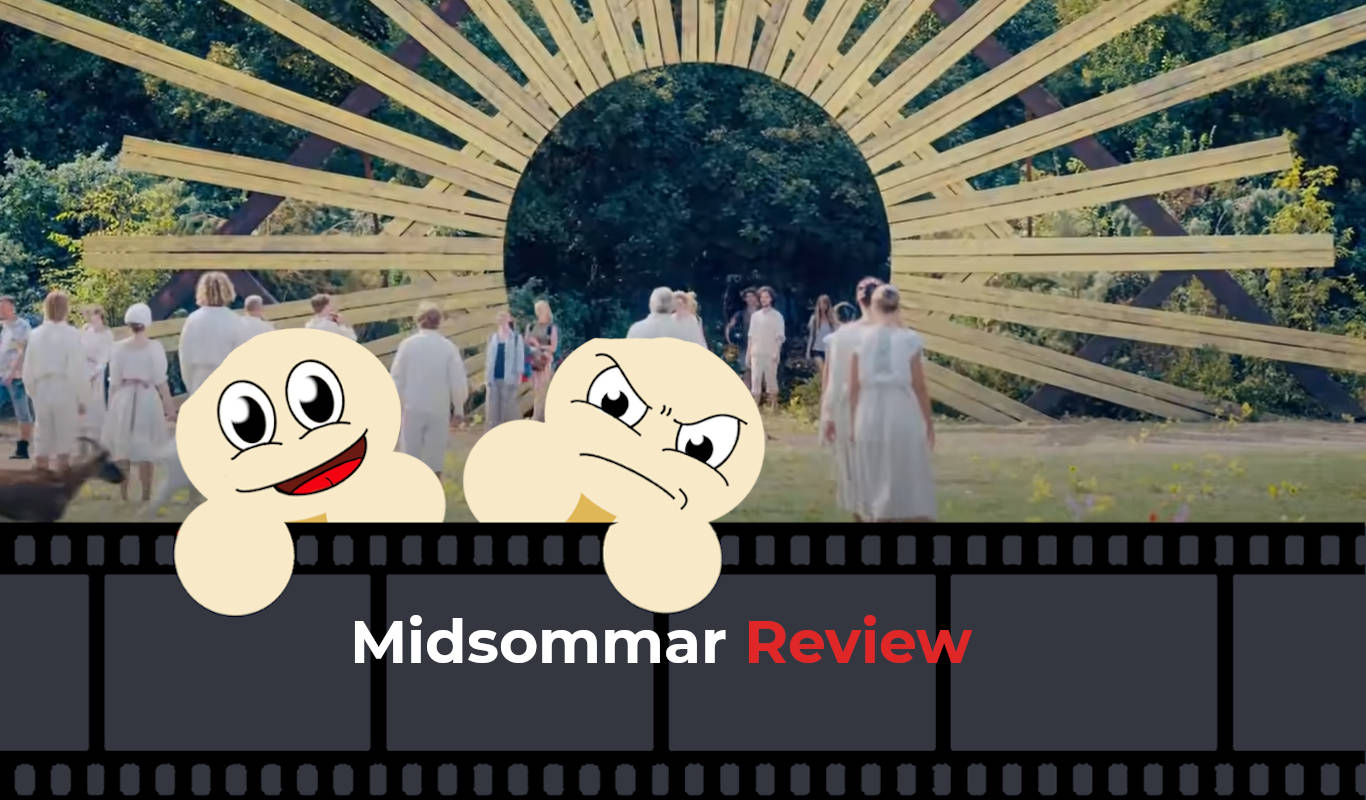Midsommar Murder Time
Introduction
I find horror to be a subjective topic, and 2019’s Midsommar is one of those films that prides itself on having a particular brand of horror. Ari Aster incorporates a similar style of psychological horror and societal commentary seen in Jordan Peele‘s movies, such as Get Out. Peele even compliments Aster on his direction in this film. While not terrifying, it does leave a lasting sense of dread throughout its runtime.
Plot and Setting
On its surface, one could view Midsommar as a film about a group of American college students accidentally getting sacrificed by a Nordic pagan cult. However, behind the creepy ceremonies and gory deaths, Midsommar also tells a dark story surrounding the devastating effects of emphatic ignorance and toxic relationships.
The film opens with our lead protagonist’s family getting killed in a murder-suicide while her boyfriend and ultimate scumbag of the entire movie, Christian, plans on breaking up with her. However, not wanting to leave Dani in a state of grief, he decides to continue the relationship, much to his annoyance.
Time passes, and now with depression, Dani tries to lean on Christian for support, but he is constantly distancing himself from her, becoming the fifth wheel in his boyband of self-centred douchebags. Eventually, they are all invited by Pelle to watch an ancient sacrificial ritual in a rural place in some nordic country to help them with their thesis. Then one by one these selfish cheesecakes manage to piss off the local cultists and somehow become part of the show.
Be prepared for a lot of feet dragging with this one, as Midsommar likes to take its sweet time before actually getting remotely interesting. Outside of watching our main character Dani’s family gets killed during the opening scene, the film can best be described as an awkward game of musical chairs during its first hour.
Having the film take place in an enchanting meadow in the middle of broad daylight is a bold move by director Aster, who breaks several conventional norms of horror films. However, slapping in some eerie music can effectively raise the creep factor in any situation.
I would not consider Midsommar to be scary, more like uneasy. Most horror films tend to have a build-up before the big scare to release some of the tension. Midsommar does not. The apprehension is constant, like walking into a house everyone says is haunted, expecting something to happen.
While several sacrificial customs and rituals were fictitious, they did a fantastic job of escalating the tension. It almost feels like the film does not want to scare the viewer but to make them as uncomfortable as humanly possible. The film presents a more societal approach to horror, creating situations that feel alien to us as the rest of society deems them unacceptable, but these people find them normal.
Characters and Performances
Our central cast can best be described as a flock of lobotomized dodo birds disguised in human skin with no idea what they have gotten themselves into and deserve to die for their ignorance. The majority of sacrificial deaths and murders could have been avoided if these morons simply respected the cultists’ boundaries.
Almost every main character in this film is either pitiful or selfish, and sometimes both for good measure, which made me hate the vast majority of them. However, Christian, portrayed by Jack Reynor, was a cut above the rest, spending the entire duration of the film either ignoring his girlfriend or double-crossing his friends for extra credit.
That said, Mark(Will Poulter) and Josh(William Jackson Harper) were no different in terms of personality. The only character who is portrayed as a decent human being is Pelle(Vilhelm Blomgren), a friend of Christian and a member of the cultists, who spends his time encouraging Dina throughout the entire film.
Now I should mention that there is a difference between me not liking a character, to not liking the acting. While I enjoyed the film’s overall performance, it would take very little convincing for me to punch these guys in the face.
Finally, that leaves Florance Pugh’s character, Dina, and since my only exposure to the actress was through Black Widow, I was impressed with her versatility. Pugh’s performance is one of a broken woman in a constant state of depression after losing her parents, rarely cracking a smile and probably inflicted with PTSD, seeing hallucinations of her dead sister everywhere. Yet, she is the one who goes through a form of character growth while everyone else regresses due to the savage culture shock.
Conclusion
There is something about Midsommar that feels off but at the same time pulls you in out of a morbid state of curiosity. It is almost like staring into the uncanny valley of horror movies. Unlike Peele’s Get Out, there is no real antagonistic threat slithering in the background. The horror just happens due to the inconsequential mindset of the main cast. As a film, it is an extremely slow boil that eventually culminates with a very gruesome end.
Midsommar is a tough film to promote to more casual horror watchers as it takes great strides to break away from the norm, not to mention its unlikable central cast. However, I do recommend watching it to see a different perspective on the genre.
